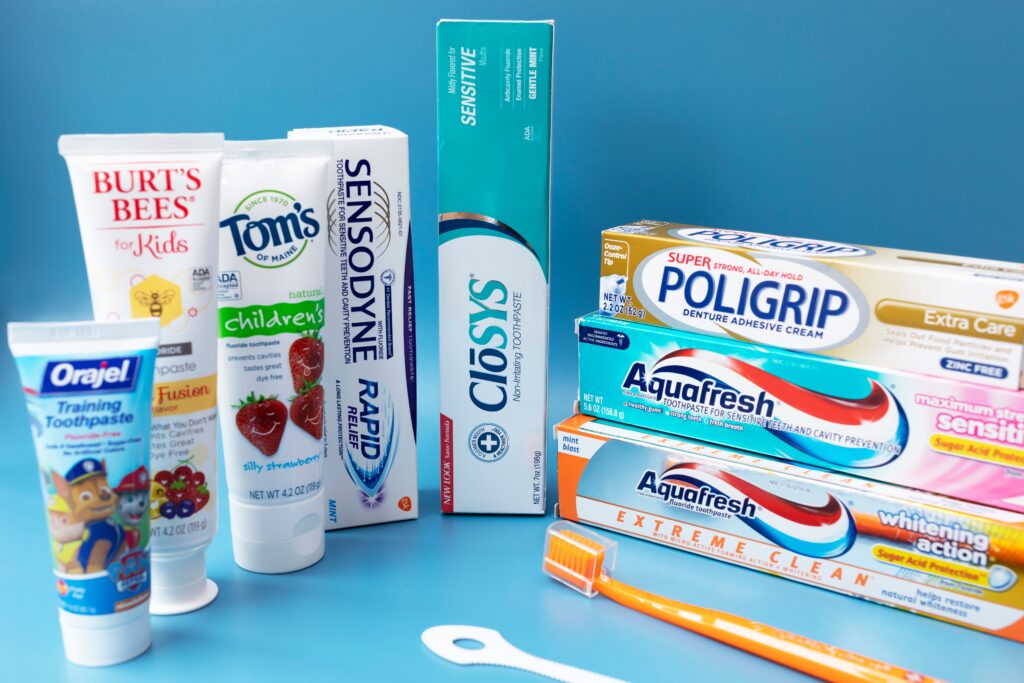Maintaining good oral health is crucial for overall well-being and confidence. A healthy mouth not only allows us to eat and speak properly but also contributes to our physical and mental well-being. Toothpaste plays a vital role in our daily dental care routine, and understanding the science behind its formulation can help us choose the most effective toothpaste for optimal oral health.
Understanding Toothpaste Formulation

Toothpaste is a specialized formulation that combines various ingredients to perform specific functions. It consists of a base, active agents, flavorings, sweeteners, and preservatives. Each ingredient used in toothpaste formulation serves a unique purpose to ensure optimal cleaning, cavity prevention, and overall oral health. Now, more and more toothpaste manufacturers provide quality solutions, such as contract manufacturing or private label oral care products, so that oral care professionals or dental product innovators can formulate the toothpaste effectively.
- Abrasives for effective cleaning and stain removal: Abrasives are crucial in toothpaste formulations as they aid in removing plaque, stains, and food particles from teeth surfaces. Common abrasive agents in toothpaste include calcium carbonate, dehydrated silica gel, and aluminum hydroxide.
- Fluoride for enamel strengthening and cavity prevention: Fluoride is a key ingredient in toothpaste that effectively strengthens enamel and prevents tooth decay. It remineralizes weakened areas of the teeth, making them more resistant to acid attacks. Sodium fluoride and stannous fluoride are commonly used forms of fluoride in toothpaste.
- Humectants for moisture retention and texture enhancement: Humectants are added to toothpaste to enhance texture, prevent drying, and improve moisture retention. Glycerin and sorbitol are commonly used humectants that provide a smooth and pleasant brushing experience.
- Binders for consistency and stability: Binders ensure that toothpaste maintains its desired consistency and stability. They help hold the toothpaste formulation together. Common binders include synthetic cellulose derivatives and seaweed colloids.
- Surfactants for foam formation and spreading ability: Surfactants are responsible for foam formation and spreading ability. They help distribute the active agents of toothpaste evenly in the mouth and enhance the overall cleaning experience. Sodium lauryl sulfate (SLS) is a commonly used surfactant in toothpaste.
Dentist-Recommended Formulation

- Identifying the ideal balance of ingredients: Dentists recommend toothpaste formulations that strike the ideal balance between effective cleaning, cavity prevention, and oral health maintenance. Toothpaste with a well-rounded combination of abrasives, fluoride, and other active ingredients ensures comprehensive oral care.
- Importance of fluoride concentration for cavity prevention: The concentration of fluoride in toothpaste is vital for cavity prevention. Dentists recommend toothpaste with a fluoride concentration of at least 1000 to 1500 parts per million (ppm) to provide optimal enamel protection and prevent tooth decay.
- Choosing the right abrasive for gentle yet effective cleaning: Toothpaste formulations with gentle abrasives are essential to avoid enamel erosion while effectively cleaning teeth. Balanced abrasives ensure proper stain removal without causing harm to the teeth.
- Optimal pH levels for maintaining oral health: Maintaining proper pH levels in toothpaste is crucial to prevent acidity and promote oral health. Dentist-recommended toothpaste maintains a neutral pH to prevent enamel erosion and maintain a healthy oral environment.
- Role of humectants in preventing dry mouth: Dry mouth can lead to oral health issues such as bad breath and tooth decay. Toothpaste formulations with humectants like glycerin help prevent dry mouth by retaining moisture and promoting saliva production.
- Selecting the most suitable binder for texture and stability: Choosing the right binder ensures toothpaste maintains its texture and stability throughout its shelf life. The appropriate binder helps maintain the desired consistency and ensures the toothpaste remains usable until the last squeeze.
- Non-irritating surfactants for a pleasant brushing experience: Toothpaste formulations with non-irritating surfactants provide a pleasant brushing experience by allowing foaming and ease of spreading. Gentle surfactants ensure that the toothpaste effectively cleans without causing uncomfortable sensations in the mouth.
Specialized Toothpaste Formulas for Specific Needs

- Whitening toothpaste: brightening your smile safely: Whitening toothpaste contains specific ingredients designed to remove extrinsic stains and restore natural tooth whiteness. These toothpaste formulations often include mild abrasives and chemicals like hydrogen peroxide or carbamide peroxide to remove surface stains and brighten the smile.
- Sensitivity toothpaste: relieving tooth sensitivity: Sensitive toothpaste is specially formulated to relieve tooth sensitivity caused by exposed dentin or receding gums. These toothpaste formulations contain desensitizing agents like potassium nitrate or strontium acetate to block nerve sensations and provide relief from sensitivity.
- Natural toothpaste: exploring chemical-free alternatives: Natural toothpaste appeals to those seeking chemical-free alternatives. These toothpaste formulations use natural ingredients like baking soda, tea tree oil, or coconut oil for their antiseptic and antibacterial properties. It is important to evaluate the benefits and limitations of natural toothpaste, as they may not always provide the same level of effectiveness as conventional toothpaste.
Toothpaste Innovations and Emerging Trends

- Advanced toothpaste technologies for enhanced oral care: Advancements in toothpaste technology have introduced new ingredients and formulations to enhance oral care. Nano-hydroxyapatite is an emerging alternative to fluoride that promotes enamel remineralization. Antibacterial agents like triclosan or essential oils are effective in combating plaque and gum disease.
- Herbal and Ayurvedic toothpaste: harnessing the power of nature: Herbal and Ayurvedic toothpaste formulations harness the power of natural ingredients to promote oral health. They incorporate herbs like neem, clove, or licorice, known for their antibacterial and anti-inflammatory properties. Additionally, some herbal toothpaste may use immunity-boosting natural extracts like aloe vera or green tea for overall oral health support.
Choosing the Right Toothpaste for You

When selecting toothpaste, several factors should be considered:
- Personal oral health needs and goals: Evaluate your oral health needs, such as cavity prevention, plaque removal, or stain removal. Consider your goals, whether you are looking to whiten your teeth, reduce sensitivity, or maintain overall oral health.
- Sensitivity to particular ingredients: Consider any allergies or sensitivities to certain ingredients. Some individuals may be sensitive to SLS or certain flavors, so it’s important to read labels and choose toothpaste that suits your needs.
- Seek advice from a dentist: It is also advisable to seek professional advice from your dentist. Dentists can provide personalized recommendations based on your oral health condition and needs.
Proper Toothbrushing Technique and Routine

- Brushing frequency and duration recommendations: Dentists recommend brushing teeth at least twice a day, preferably after meals. Brushing for two minutes is the recommended duration to ensure thorough plaque removal.
- Correct brushing technique for optimal plaque removal: For effective plaque removal, brush teeth in a circular motion at a 45-degree angle towards the gum line. Pay attention to all surfaces, including the tongue, using a scraper or the back of the toothbrush for gentle cleaning. This prevents bacteria buildup and bad breath.
Beyond Toothpaste: Complementary Oral Care Practices

- Importance of flossing for interdental cleaning: Flossing is an essential part of oral care that should not be overlooked. It helps remove plaque and food particles from between the teeth that a toothbrush cannot reach. Incorporating daily flossing into your routine ensures comprehensive oral hygiene.
- The role of mouthwash in maintaining oral hygiene: Mouthwash can be used as a supplementary tool for maintaining oral hygiene. It helps freshen breath, reduce plaque buildup, and reach areas that are difficult to clean with a toothbrush or floss alone. Choose a mouthwash that addresses your specific needs, such as fluoride mouthwash for cavity prevention or antibacterial mouthwash for gum health.
- Other oral care practices to consider for a comprehensive routine: Additional oral care practices that contribute to a comprehensive routine include using interdental brushes, oral irrigators, and tongue scrapers. These tools help remove plaque and debris from hard-to-reach areas, ensuring thorough cleaning.
Maintaining Oral Health for a Lifetime

- Consistency in daily oral care routine: Consistency is key to maintaining optimal oral health. Adhering to a daily oral care routine that includes brushing, flossing, and using mouthwash ensures long-term oral health benefits.
- Regular dental check-ups and professional cleanings: Regular dental check-ups and professional cleanings are crucial to detect and address any dental issues early on. Dentists can also provide specialized treatments such as fluoride applications or dental sealants to enhance oral health further.
- Lifestyle habits that impact oral health: Maintaining optimal oral health involves a balanced diet rich in calcium and vitamin D while avoiding destructive habits like nail-biting, teeth-grinding, and smoking.
Conclusion
Understanding toothpaste formulations guides the choice for optimal oral health. Identify your needs, seek professional advice, and select the right toothpaste. Remember, it’s part of a broader oral care routine. Regular check-ups, proper brushing, and additional practices contribute to a lifetime of healthy smiles. Empower yourself with knowledge for a radiant smile.















